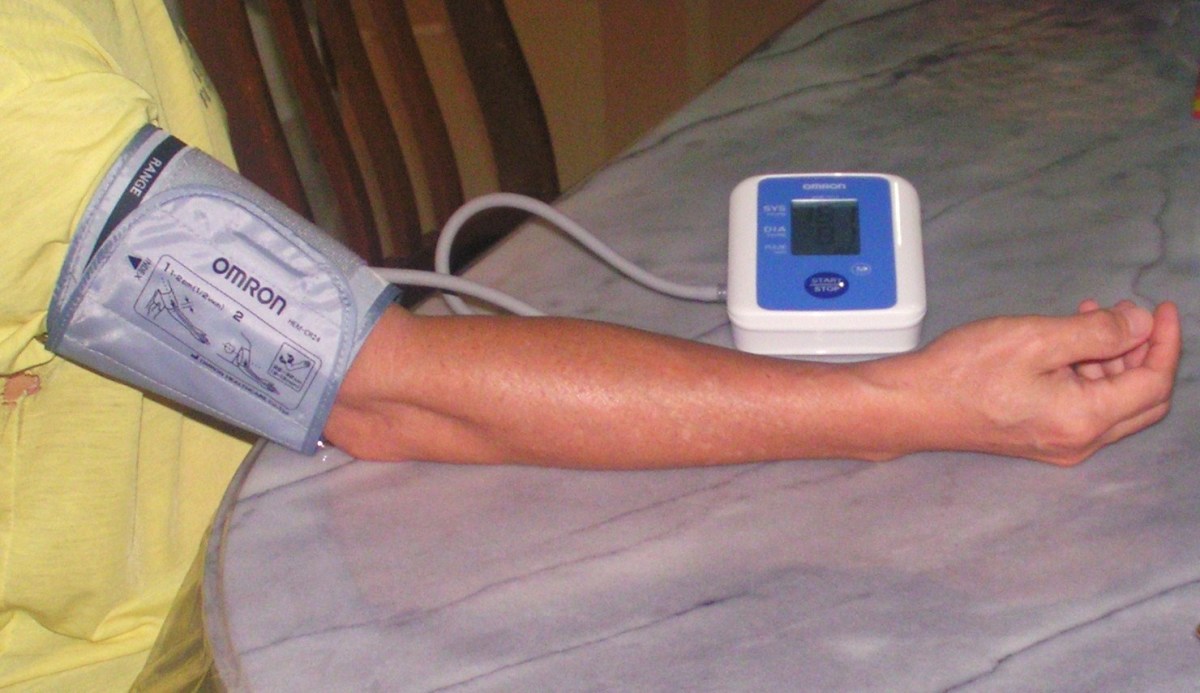Benign Paroxysmal Positional Vertigo and Vestibulopathy:My Day of Personal Experiences With Dizziness:Is It In My Head
Spinning Out Of Control

Benign paroxysmal positional vertigo - BPPV
One day I was driving home from work as usual. I caught something out of my peripheral vision and quickly turned my head to see what it was. It was nothing important – a bird flying by. A few days later, I was walking down the hall of our school and turned quickly to see a student running in the hall. Later that week, as I was getting up to get ready for work and got up too fast. None of these small incidents would have even been remembered except for the fact that they all brought on a short instance of vertigo. For a second or two, complete and utter dizziness. Still, these would not have been a big deal in my life if it had stopped there.
Since I already had an appointment for my doctor, I waited until the following Monday and told her about the incidents. She didn’t seem to be too concerned. She had me hang my head off the table and had me turn my head rapidly from left to right – a movement I later found out was called the Dix-Hallpike test. This made me extremely dizzy – so much that I thought I would fall off the table. Carefully my doctor sat me up and told me that she was sure that I had a condition called Benign Paroxysmal Positional Vertigo, or BPPV.
BPPV is basically vertigo, or dizziness caused by crystals in the inner ear that are not where they belong. These crystals get caught in the fluids of your inner ear, causing false signals to be sent to your brain, therefore causing the vertigo. BPPV is almost always caused by quick movements of the head, such as turning to see what is flying by or turning to get out of bed quickly.
Treatment for BVVP is generally exercises to clear the debris from the ear. In simple terms, these exercises have patients lie on their sides at a certain angle, sit up for thirty seconds, and repeat for the other side. This is a simplified explanation, of course, and if you would like more information about it, you can follow this link: http://vestibular.org/understanding-vestibular-disorders
After getting this information, I took the pamphlet from doctor and went home, fully intending to do the exercises later that evening. Things happened and the exercises did not get done. The next day, I went to work and later went to the gym for some water aerobics. When I returned home, I remembered the exercises and proceeded to do them. This made me severely dizzy, as I expected, but the dizziness went away fairly quickly.
About an hour later, the dizziness returned, along with an unbearable migraine. I had never had a migraine before this and the pain was worse than any I had ever experienced. As I later told my sister, I felt as if I was on a merry-go-round going a hundred miles an hour and being hit in the head with a hammer on every revolution. It was horrible. I went bed that night and nearly cried myself to sleep.
When I woke the next morning, the pain and dizziness was still there. It was milder, but still there. I took my grandson to daycare safely, but after I dropped him off the pain returned so quickly that I had to pull off the road into a nearby parking lot. I laid my head back and closed my eyes. After about fifteen minutes, the pain had subsided enough that I was able to drive again, and drove into work.
Again, I don’t remember that morning, the pain and dizziness continued to worsen. I made arrangements to go home at lunch. Today, it scares me that I do not remember that drive home. Luckily, I made it home safely and walked upstairs to fall into bed. The light and every small noise was horrendous. It hurt so bad, I knew my head would surely explode. This whole time, the dizziness never stopped. This continued throughout the rest of the week. I barely remember those days, knowing only my husband kept trying to get me to eat something and drink some fluids.
When the symptoms were still there and even worse on the following Monday, my husband called our doctor. She told him to bring me to see her that afternoon. Again, I don’t remember the events of that day, but I was told that I was not doing very well, and when the doctor used a scope to check my eyes, I nearly fell from the table. My doctor decided I needed to be taken to the emergency room for tests.
At the emergency room, I was given a CT scan and MRI to rule out a stroke, a bleed in the brain, tumors, or multiple sclerosis, among other things. Luckily, these tests turned out to show no issues in my brain. And that was just the beginning.
I was admitted to the hospital to have blood tests and other tests run. They took blood and urine and did other tests to try to find out what was going on. I was put on a regiment of medications to try to get the headache and dizziness to go away. I was given morphine intravenously that were strong enough that they knocked me out after a surgery a couple of years ago, and it barely did anything for my pain this time. The same went for all of the different medications for the dizziness. By this time, the pain and dizziness had been going on continuously for over a week.
Finally, after all this time, the doctors came upon a group of medications that lessened the pain. It was still there, but instead of a 9 or 10 on a scale of 1- 10, it was more of a 5 or 6. Much more bearable.
Doctors of every variety came to check on me. None had any idea of what was going on – except for the initial diagnosis of BPPV. None felt that BPPV would last continuously this long. After being at the hospital for five days, I was discharged without a reason for these headaches and dizziness, but at least with medication to calm the symptoms.
The next week I went to see an ear, nose, throat doctor. He did some of the same tests they had done in the hospital. I just want to say - that when you are already dizzy and can't get the dizziness to stop, test to make you even more dizzy are just cruel and mean. Unfortunately, they are also necessary. After all of his testing, the only thing that he could tell me was that I was dizzy...yeah....I already KNEW that!! He set me up an appointment with a vestibular therapist.
I was told that it would be weeks before I could in to see a vestibular therapist, but luckily there was a cancellation and I got in two days later. I was anxious to have this appointment - and scared. No one had been able to tell me much so far, and my biggest fear was that I would not find out anything today either. But I was so wrong.
The therapist was a wonderful woman who is nine months pregnant. She put me through a series of tests.
The electronystagmography test basically checks how your eyes work with your vestibular system. I had special goggle on that recorded movements as I followed a moving dot going in different directions. Except for the weird goggles, this wasn't too bad.
The next test was the rotating chair test. In this test you sit in a moving chair while trying not to move your head as you follow a moving red dot around. The chair never goes in a complete rotation, but it feels as if you are. Again, during this test you wear goggles that measure your eye movements and other things.
After that, I was taken into a different room and told to sit on a table. I was to sit at a certain spot and again, with goggles on, was asked to follow a moving dot. It went in a horizontal direction at one time, and then in a vertical direction.
Then it was the dreaded Dix-Hallpike test. Although it had been done at my doctor's office, the ENT office and the hospital, I had to do it again. Again - it is a cruel test! The therapist said she wanted to record my reactions since this hadn't been done before. She also wanted to see the reaction herself. I didn't disappoint - if it had not been for her assistant I would have landed on the floor.
While I was still laying down, she did a couple of tests using water. The first test was with cold water and the second was with hot water. Both tests involved spraying water into both ears (one at a time) and measuring the resulting dizziness. It wasn't really that uncomfortable, except the noise of the water rushing into my ears.
After all of this I was finally given a report. I did indeed have the BPPV that everyone had suspected, but I also have vestibulopathy. This is basically a big fancy word for saying my right inner ear is getting old....Really what it means is that there is some degeneration in my inner ear. The fluids and the hairs are sending out bad signals. Since my left ear was still sending out the correct signals, my brain is getting confused and can't tell what position my body is really in.
There is treatment for both of these disorders. For BPPV there is a procedure called the Epley repositioning maneuver. The therapist put me through some different movements and after about ten minutes that part of my issue was completely taken care of. It was amazing!
For the vestibulopathy, there is vestibular therapy available. Again, through a series of different maneuvers throughout a few weeks of therapy, my brain will basically be retrained to ignore the signals from the right ear and only pay attention to the left ear.
Now, after worrying about all of this for around three weeks, the end is in sight. What a relief!
The Friday after my visit to the vestibular therapist, I started therapy. The first day I was put in a harness, similar to a parachute harness and strapped into this contraption. It was tall and cylindrical and reminded me of a version of the teleporter in the old Star Trek series. I was told to stand there and wait for thirty seconds. The therapist was taking some kind of measurements. Then suddenly the walls in this contraption began moving. After a few minutes, the floor also began to move. If not for the harness, I would have fallen several times. After a few minutes, I had to repeat the same things with my eyes closed. Boy, was that fun!
After doing this, I was given a series of exercises to work on at home. Now, after two months, the dizziness is nearly completely gone. It still occurs occasionally, but not nearly like it was when it started. After two more visits with the therapist, it should be completely gone. It seems silly now, and easy to take care of, but it took the right people to figure out the problem and to treat it.
I am glad that it is nearly over!







